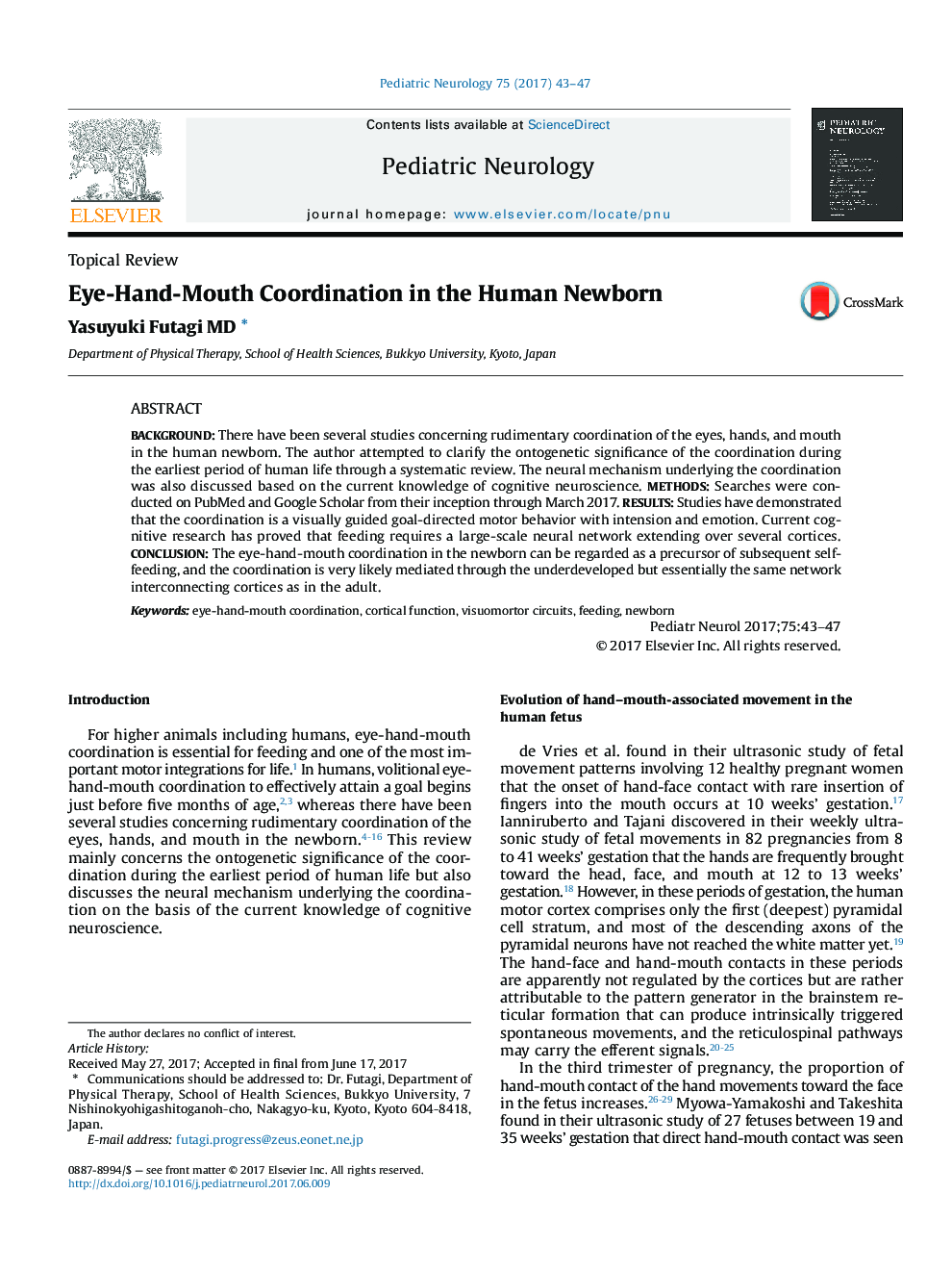| Article ID | Journal | Published Year | Pages | File Type |
|---|---|---|---|---|
| 5632802 | Pediatric Neurology | 2017 | 5 Pages |
BackgroundThere have been several studies concerning rudimentary coordination of the eyes, hands, and mouth in the human newborn. The author attempted to clarify the ontogenetic significance of the coordination during the earliest period of human life through a systematic review. The neural mechanism underlying the coordination was also discussed based on the current knowledge of cognitive neuroscience.MethodsSearches were conducted on PubMed and Google Scholar from their inception through March 2017.ResultsStudies have demonstrated that the coordination is a visually guided goal-directed motor behavior with intension and emotion. Current cognitive research has proved that feeding requires a large-scale neural network extending over several cortices.ConclusionThe eye-hand-mouth coordination in the newborn can be regarded as a precursor of subsequent self-feeding, and the coordination is very likely mediated through the underdeveloped but essentially the same network interconnecting cortices as in the adult.
